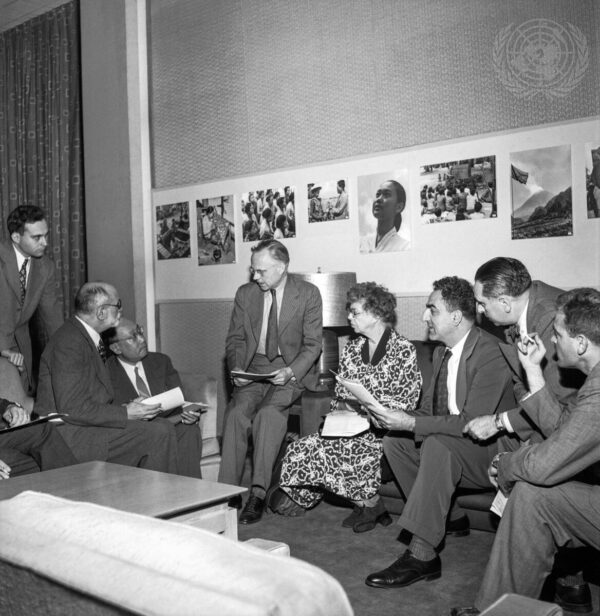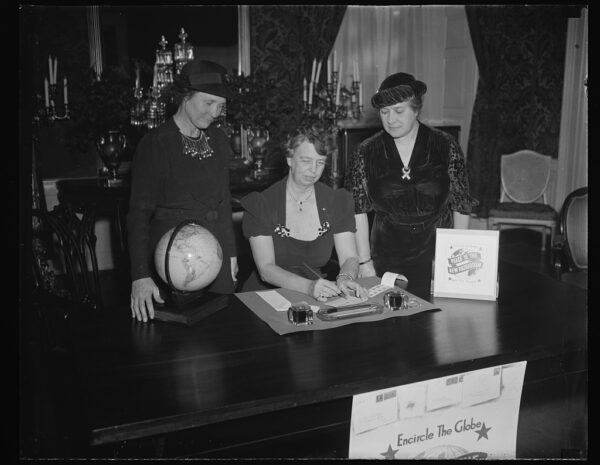
Human Rights 101: The Universal Declaration of Human Rights
In this lesson, students will learn how human rights differ from civil rights and gain introductory knowledge of how the international community united to define and defend human rights.

Anna Eleanor Roosevelt was born into a wealthy family in New York City at the end of the 19th century. Her father, Elliott Roosevelt was President Theodore “Teddy” Roosevelt’s younger brother. Her mother, Anna Hall, was a popular socialite from a prominent family. Sadly, both of Roosevelt’s parents died while she was still a child. She was sent to boarding school in England in 1899. In 1902 Roosevelt returned to New York and dove into what would become her lifelong work as an advocate for social causes. During her life she worked with numerous organizations, primarily those focused on women’s issues, including the Rivington Street Settlement House, the Women’s Trade Union Leage, the League of Women Voters, Val-Kill Industries, and the Todhunter School. During World War I, Roosevelt volunteered with the American Red Cross.
Eleanor Roosevelt married her fifth cousin, Franklin Delano Roosevelt (FDR), in 1905 and the couple had six children. While her charity work slowed during her children’s early years, Eleanor was soon back in the thick of things. In 1921 her husband contracted polio and he came to increasingly rely on his wife for assistance with his political duties. By the time the family moved into the White House in 1933, Eleanor was known as FDR’s “eyes, ears, and legs.” She travelled the country in lieu of the President and reported back to him and to the nation at large through her syndicated newspaper column “My Day.”
During World War II Roosevelt served as the Assistant Director of Civil Defense, continued travelling around the nation as a liaison for her husband, and travelled to the South Pacific to visit with troops and boost morale. FDR died in early 1945 and though Eleanor retired to private life, she was soon back in the international spotlight when she was appointed as the first Chair of the United Nation’s Commission on Human Rights in 1946. In addition to serving as the Human Rights Commission Chair through 1952, Roosevelt was also the first United States representative to the United Nations until stepping down from that role in January of 1953. In 1961 President Kennedy asked Roosevelt to return to the United Nations, but in 1962 Roosevelt died and was buried next to her husband in New York. Due to her invaluable contributions to the establishment of the United Nations, Eleanor Roosevelt was posthumously awarded the UN’s Human Rights prize.
Featured in

In this lesson, students will learn how human rights differ from civil rights and gain introductory knowledge of how the international community united to define and defend human rights.